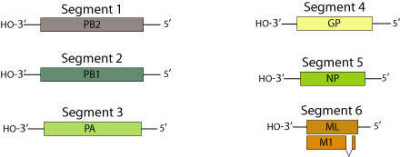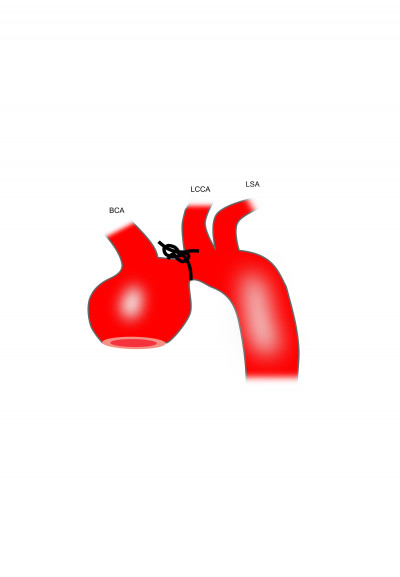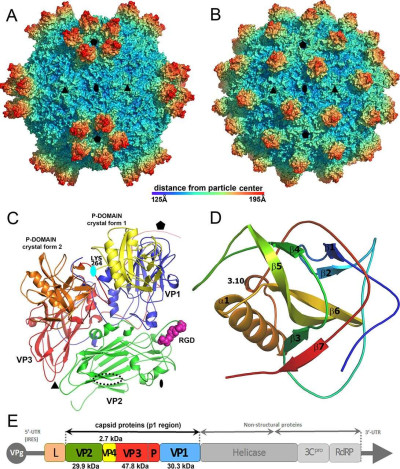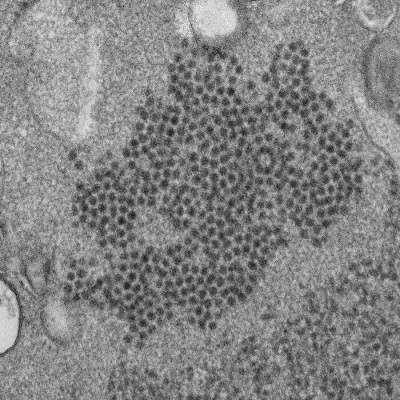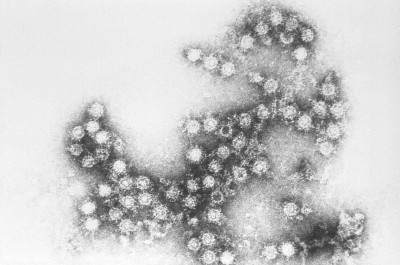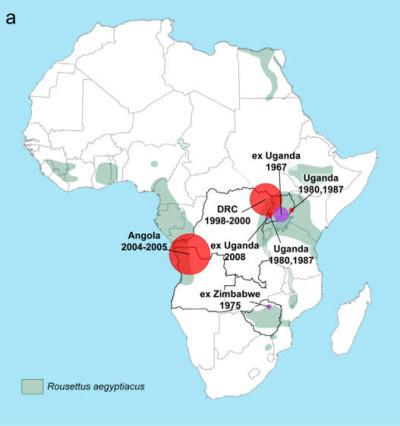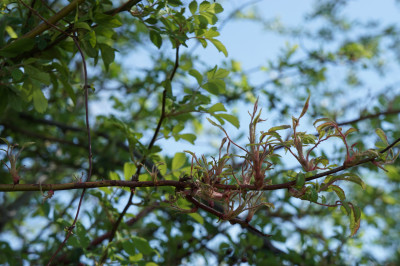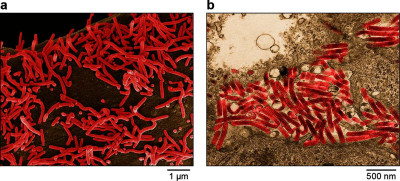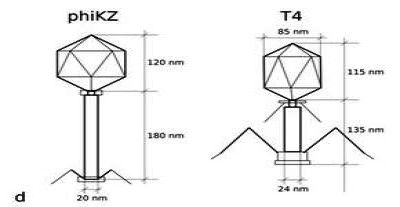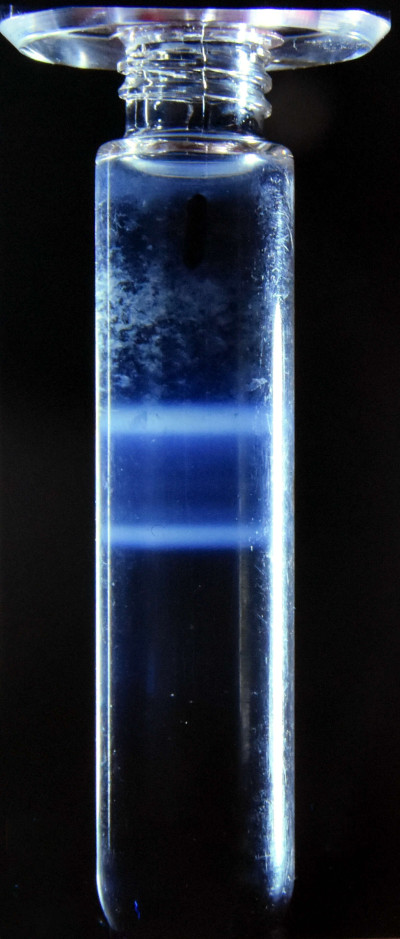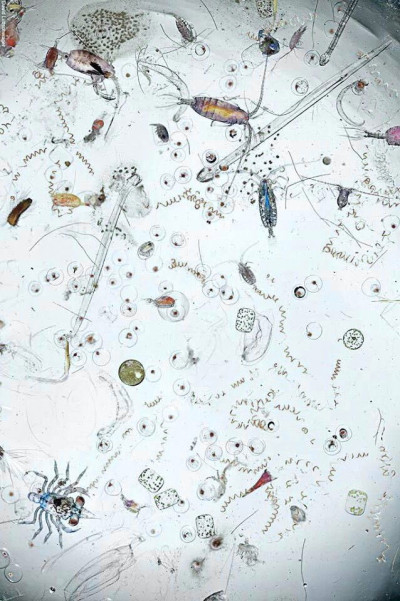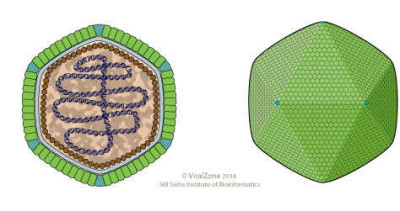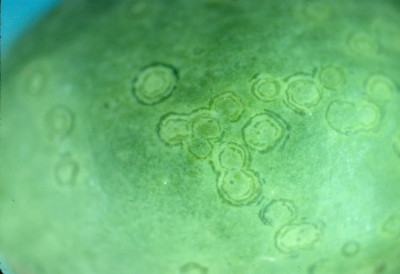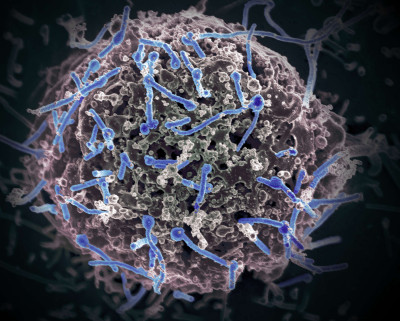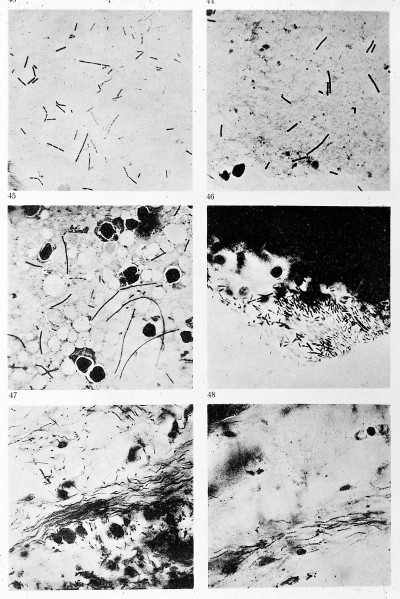Diagram of mesonivirus genome. Monopartite, linear ssRNA(+) genome of about 20 kb in size.
ViralZone, SIB Swiss Institute of Bioinformatics, Wikimedia Commons
22 Feb 2024
Thogotovirus genome map. Segmented ssRNA(-) linear genome, encapsidated by nucleoprotein (NP) Contains 6 to 7 segments coding for 7 to 9 proteins. Segments size range from 0.9 to 2.3 kb. Genome total size is about 10 Kb.
ViralZone, SIB Swiss Institute of Bioinformatics, Wikimedia Commons
23 Feb 2024
Schematic drawing of a virion of the genus Deltalipothrixvirus. Enveloped, rod-shaped virion about 1100 nm long and 24 nm in diameter. Genomic DNA is packaged into a core. The terminus display a complex collar structure.
ViralZone, SIB Swiss Institute of Bioinformatics, Wikimedia Commons
23 Feb 2024
The black knot shows the area of constriction. BCA, brachiocephalic artery; LCCA, left common carotid artery; LSA, left sub- clavian artery; TAA, thoracic aortic aneurysm.[1]
28 Feb 2024
Structure of Slow Bee Paralysis (SBPV) virion and icosahedral asymmetric unit. Surface representations of SBPV virions determined in crystal form 1 (A) and crystal form 2 (B) show differences in the positioning of the P domains. The surfaces of the particles are rainbow-colored based on the distance from the particle center. Depressions are shown in blue and peaks in red. (C) Cartoon representation of SBPV icosahedral asymmetric unit. VP1 is shown in blue, VP2 in green, and VP3 in red. The P domain positioned as in crystal form 1 is shown in yellow and in crystal form 2 in orange. Locations of 5-fold, 3-fold, and 2-fold icosahedral symmetry axes are indicated by a pentagon, triangle, and oval, respectively. The RGD motif found in the GH loop of VP2 subunit is shown as space-filling model in magenta. The position of the RGD motif in FMDV is indicated with a dotted black oval. The cyan oval indicates the position of rotation axis relating the two P domain positions. (D) Cartoon representation of P domain rainbow colored from the N terminus in blue to the C terminus in red. Names of secondary structure elements are indicated. (E) Diagram of SBPV genome organization. Capsid proteins VP1, VP2, and VP3 were identified based on their location in the capsid according to the picornavirus convention. Predicted molecular masses of capsid proteins are specified. The location of the P domain of VP3 is indicated. VPg, viral protein, genome linked; L, leader peptide; IRES, internal ribosome entry site; UTR, untranslated region; 3CPRO, 3C protease; RdRP, RNA-dependent RNA polymerase. [1]
Sergei Kalynych, Antonín Přidal, Lenka Pálková, Yevgen Levdansky, Joachim R. de Miranda, Pavel Plevka
01 Mar 2024
This photo shows an electron micrograph of a thin section of numerous, spherical EV-D68 viral particles. Note that some of the viral particles appear as if they are "empty," missing their contents of single-stranded RNA.
Cynthia S. Goldsmith and Yiting Zhang, CDC, Wikimedia Commons
08 Mar 2024
Coxsackie B4 virus seen with an immunoelectron microscope. Using immunoelectron microscopic technique, one is able to discern the morphologic traits of the Coxsackie B4 virus virions. In addition to the three different polioviruses, there are 61 non-polio enteroviruses that can cause disease in humans. These include the 23 Coxsackie A viruses, 6 Coxsackie B viruses, 28 echoviruses, and 4 other enteroviruses.
Wikimedia Commons, CDC's Public Health Image Library
08 Mar 2024
Geographic distribution and phylogenetic analysis of Marburg virus. Location of Marburg virus (MARV) infections (circle sizes correspond to reported number of MARV cases) and distribution of the Egyptian fruit bat (Rousettus aegyptiacus) in Africa (www.iucnredlist.org). Outbreak locations (red circles) and sites of initial infection for exported cases of Marburg virus disease (MVD) (purple circles) are shown. [1]
Kristina Brauburger, Adam J. Hume, Elke Mühlberger, and Judith Olejnik, Wikimedia Commons
11 Mar 2024
Schematic drawings of virions of family Dicistroviridae. Non enveloped, pseudo T=3 icosahedral capsid, about 30 nm in diameter.
Wikimedia Commons, ViralZone, SIB Swiss Institute of Bioinformatics
01 Apr 2024
Rose rosette disease is characterized by abnormal growth of stems, leaves, and flowers in roses. This condition is caused by a virus, which necessitates the transmission of the disease between plants by a minuscule mite known as an eriophyid mite. These mites are extremely tiny and can only be observed under intense magnification.
iNaturalist
09 Apr 2024
Electron microscopic images of Marburg virus particles budding from infected Vero E6 cells, (a) scanning EM, (b) transmission EM. Images are colourized for clarity. Courtesy of John G. Bernbaum and Jiro Wada, IRF-Frederick.
Wikimedia Commons, Jens H. Kuhn, Gaya K. Amarasinghe, Christopher F. Basler, Sina Bavari4, Alexander Bukreyev, Kartik Chandran, Ian Crozier, Olga Dolnik, John M. Dye, Pierre B. H. Formenty, Anthony Griffiths, Roger Hewson, Gary P. Kobinger,
10 Apr 2024
A schematic drawing of phage phiKZ and T4 for size comparison of the particles.
Wikimedia Commons, Victor Krylov, Maria Bourkaltseva, Elena Pleteneva, Olga Shaburova, Sergey Krylov, Alexander Karaulov, Sergey Zhavoronok, Oxana Svitich, Vitaly Zverev
18 Apr 2024
Open reading frames (ORF) of human T-cell leukemia virus (HTLV) subtype retroviruses.
Wikimedia Commons, Tylercj2
18 Apr 2024
A 6cm polystyrene tube containing caesium chloride (CsCl) solution and two morphological types of rotavirus. Following centrifugation at 100g a density gradient forms in the CsCl solution and the the virus particle separate according to their densities.
Wikimedia Commons, Graham Beards
18 Apr 2024
When sea water is examined under a microscope, it reveals a hidden world teeming with microscopic life and particles. The most prominent features are plankton—tiny organisms that drift in the water. These can include phytoplankton, like diatoms and dinoflagellates, which are plant-like and often exhibit intricate, geometric shapes and structures. Zooplankton, such as tiny crustaceans, larvae, and protozoa, are also present, moving with rhythmic, jerky motions as they propel themselves with cilia or appendages.
In addition to plankton, the water may contain microscopic debris such as mineral particles, organic matter, and tiny air bubbles. Occasionally, bacteria and viruses may be observed as well, though they are often too small to see without higher magnification. Salt crystals can also be seen, appearing as tiny, cubic structures that may form as the water evaporates on the microscope slide.
This microscopic view of seawater offers a glimpse into the diverse and dynamic ecosystem that plays a crucial role in Earth's biological and chemical processes, highlighting the richness of life even in a single drop of ocean water.
09 Aug 2024
Schematic drawing of a virion of the Marseillevirus, family Marseilleviridae, cross section and side view.
ViralZone, SIB Swiss Institute of Bioinformatics, Wikimedia Commons
29 Feb 2024
Cytomegalovirus (CMV) is a prevalent virus typically considered benign, but it can pose challenges for infants and individuals with compromised immune systems on occasion.
Wikimedia Commons, Alejomar
24 Jan 2024
Papaya ringspot virus induces ringspots on fruits.
Wikimedia Commons, Scot Nelson
24 Jan 2024
Ebola virus isolated in November 2014 from patient blood samples obtained in Mali. The virus was isolated on Vero cells.
NIAID, Wikimedia Commons
24 Jan 2024
Bacillus of malignant odema x700 (43-46); Bacillus in the cornea of a pox disease of sheep x700 (47-48).
Wikimedia Commons, Wellcome Collection
02 Feb 2024
 Encyclopedia
Encyclopedia

